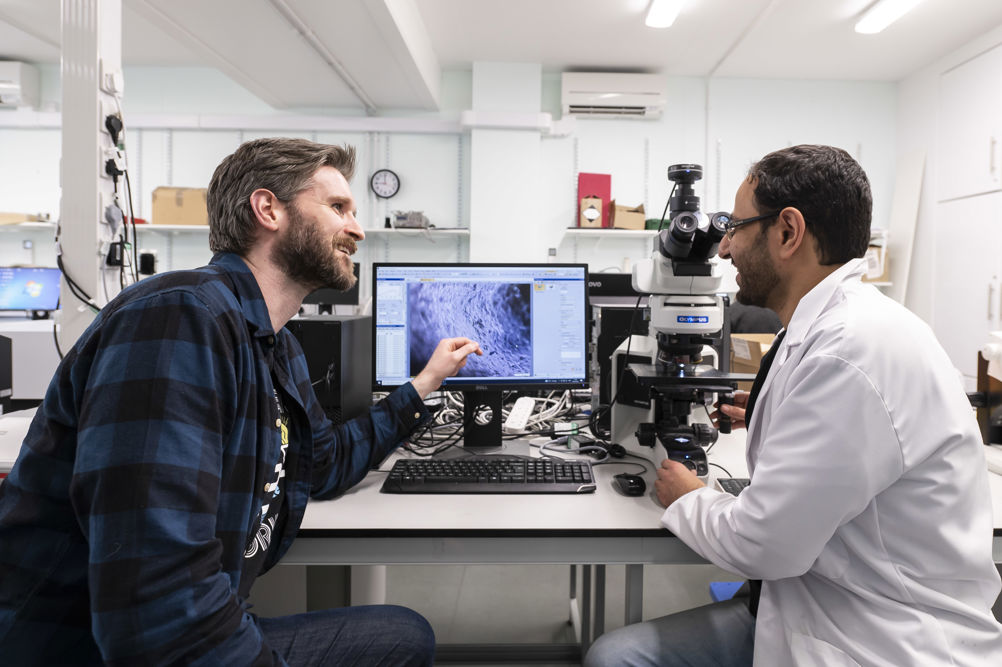The sensor was created using food-grade algae mixed with a pristine, aqueous graphene suspension. The resulting nanocomposite films were then processed into biodegradable hydrogels, which formed the basis of the sensors.
According to the team, their sustainable sensors outperform existing synthetic-based hydrogels and nanomaterials, currently used in wearable health and fitness monitors. Their paper, published in ACS Sustainable Chemistry & Engineering, describes how the seaweed-graphene hydrogels were so sensitive that they could measure an object just 2mg in mass landing on their surface, equivalent to a single rain droplet. Lead researcher Dr Conor Boland took inspiration for the work from an unusual source.
“I was first inspired to use seaweed in the lab after watching MasterChef during lockdown,” said Boland, a materials physics lecturer at Sussex’s School of Mathematical and Physical Sciences. “Seaweed, when used to thicken deserts, gives them a soft and bouncy structure – favoured by vegans and vegetarians as an alternative to gelatin. It got me thinking: ‘what if we could do that with sensing technology?’.”

While the performance of the sensor is of course crucial, according to Boland, it is the environmental qualities that he and the Sussex team are most proud of.
“For me, one of the most exciting aspects to this development is that we have a sensor that is both fully biodegradable and highly effective,” he said. “The mass production of unsustainable rubber and plastic based health technology could, ironically, pose a risk to human health through microplastics leeching into water sources as they degrade.
“As a new parent, I see it as my responsibility to ensure my research enables the realisation of a cleaner world for all our children.”
The Sussex team envision that future applications of the sensors would look something like a second skin or a temporary tattoo: lightweight, easy to apply, safe, and environmentally friendly. They believe this has the potential to significantly improve patient experience, reducing the need for invasive hospital instruments, and eliminating the use of some wires and leads associated with current sensing technology.
“What’s so exciting about this development from Dr Conor Boland and his team is that it manages to be all at once truly sustainable, affordable, and highly effective – out-performing synthetic alternatives,” said Dr Sue Baxter, director of Innovation and Business Partnerships at Sussex University.
“What’s also remarkable for this stage of research – and I think this speaks to the meticulous ground-work that Dr Boland and his team put in when they created their blueprint – is that it’s more than a proof of principle development. Our Sussex scientists have created a device that has real potential for industry development into a product from which you or I could benefit in the relatively near future.”











McMurtry Spéirling defies gravity using fan downforce
Ground effect fans were banned from competitive motorsport from the end of the 1978 season following the introduction of Gordon Murray's Brabham...